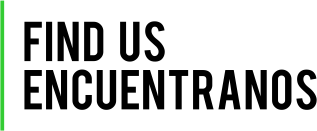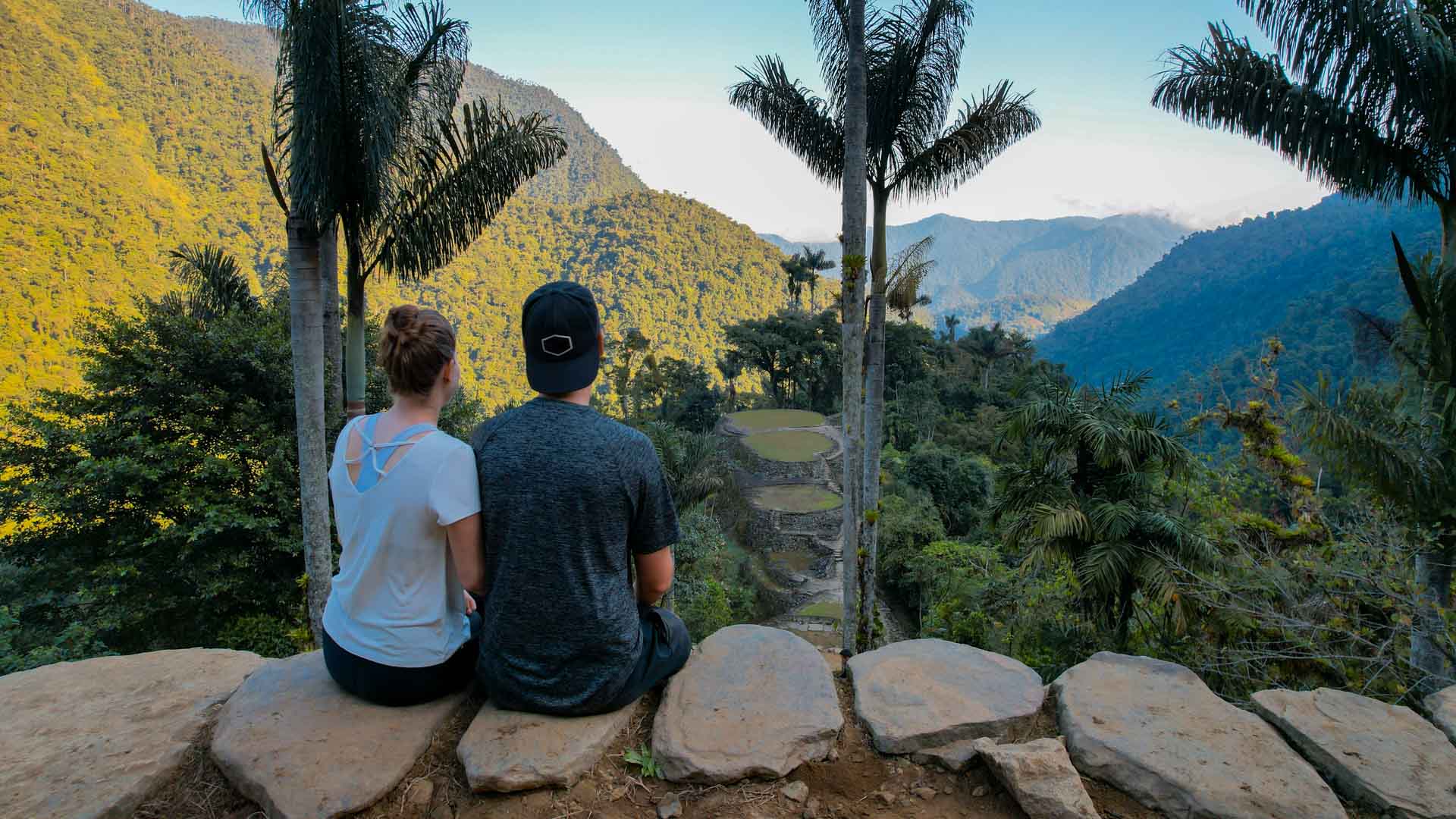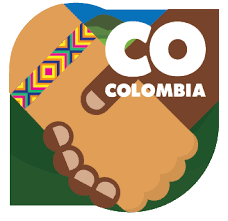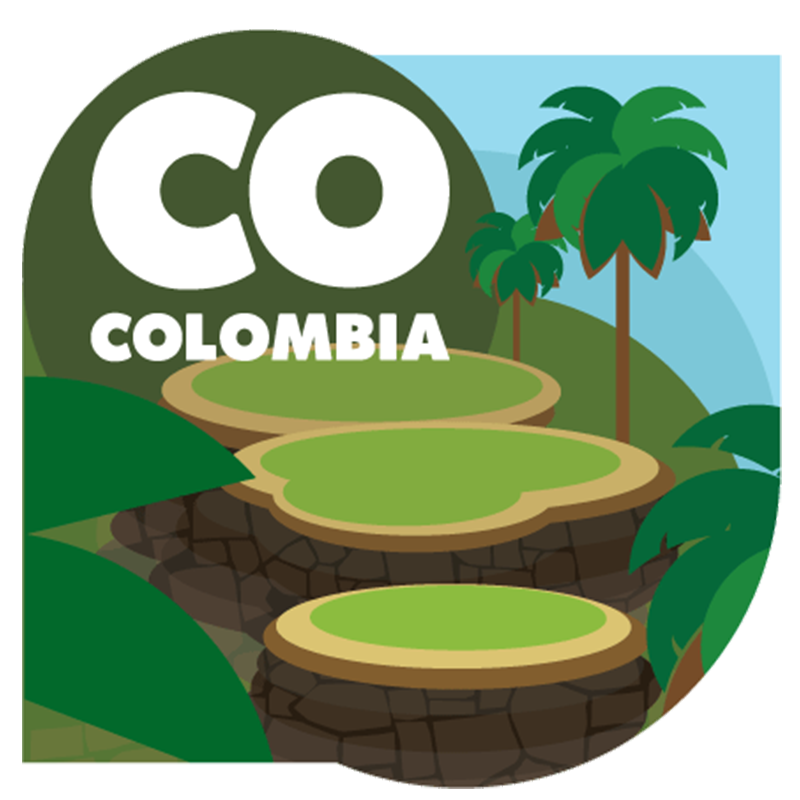The towns of the Sierra Nevada de Santa Marta are divided into zones according to the slope they inhabit.
Maintaining different ways of living with their environment, these groups are located in places considered strategic, according to the needs of each one. Greater precision in the present letter, three of the tribes that inhabit the mountainous massif, the Koguis, the Wiwa and finally, Arhuaco shall be taken into account.
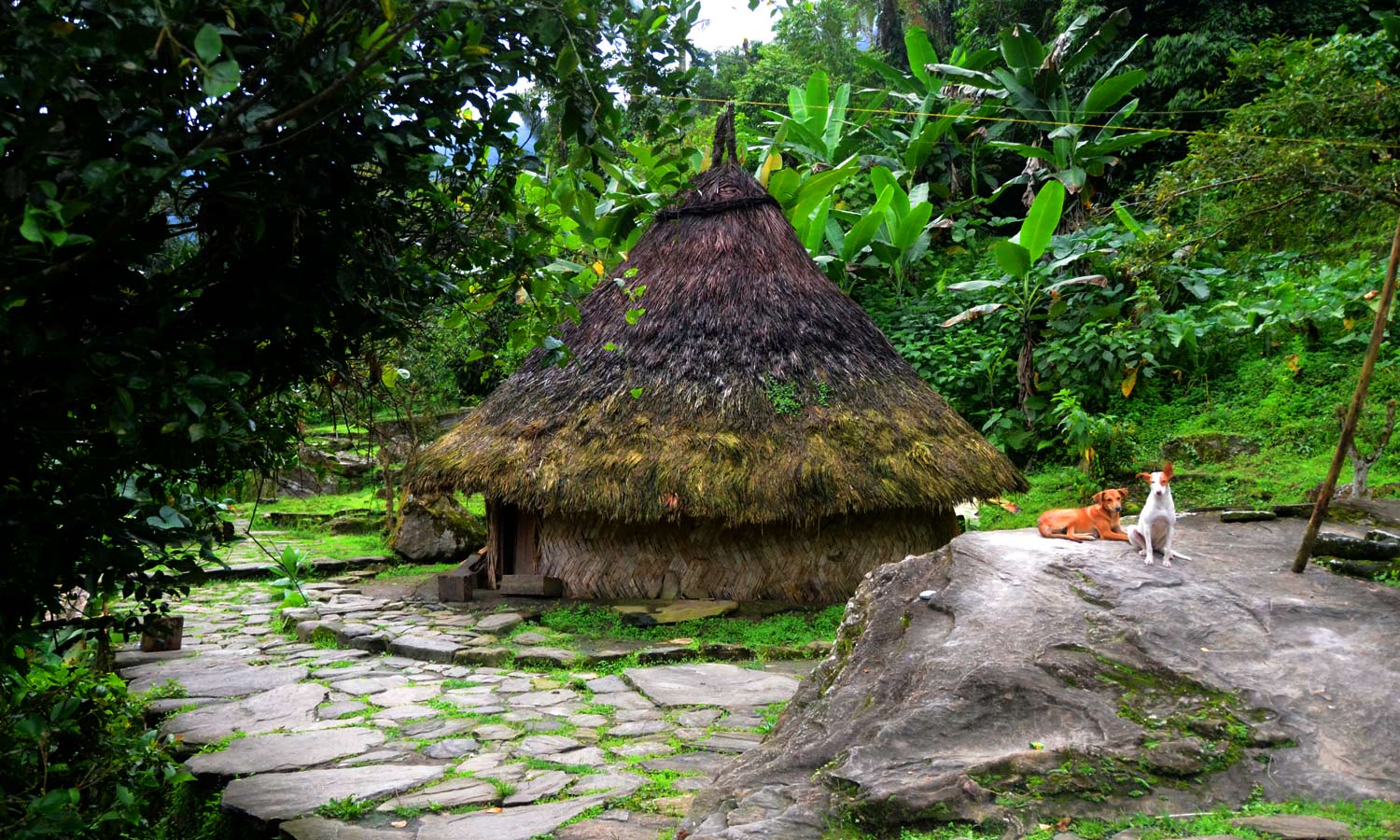
Kogui housing on the terraces of “Teyuna”, the lost city
Indigenous people of the Sierra Nevada de Santa Marta
Kogui
The first Indigenous people of the Sierra Nevada that we are goingto talk about are the Koguis. The Kogui are a town that is located on the northern slope in the Valleys of the Rancheria, Tapias, Ancho, Jerez, Palomino, San Miguel, Garavito, Don Diego, and Buritaca Rivers.
They also have settlements on the western slope, on the basin of the rivers Sevilla and Tucurinca and on the south-east at the headwaters of the Guatapuri, Cesar, Ranchería and Badillo rivers. Kogui are the ones who have had the least contact with Westerners; they do not handle the Spanish language.
They are the people who have best maintained their traditions while retaining their traits and costumes. The women weave the backpacks with sisal and cotton, the latter is also used by men to weave the costumes of their families. Loom is for the exclusive use of men.
Kogui men
Men wear long, wide pants that end about 20 centimeters below the knees, a long shirt with wide sleeves and always carry two or more backpacks hanging over the torso.
Read also: where to book the tour to the lost city?
The Kogi usually walk barefoot because of a belief that says that if they are walking barefoot generate greater contact and relationship with the land. This custom has been maintained by men and women of different generations of this tribe for years.
Kogui women
The Kogui women wear dresses with skirts which are wrapped around the body, covering the upper part of their torso with a piece of cloth over one shoulder leaving the other one uncovered.
They also carry on his neck collars, made with stones that are combined with “chakiras”, these are also used by girls as an ornament.
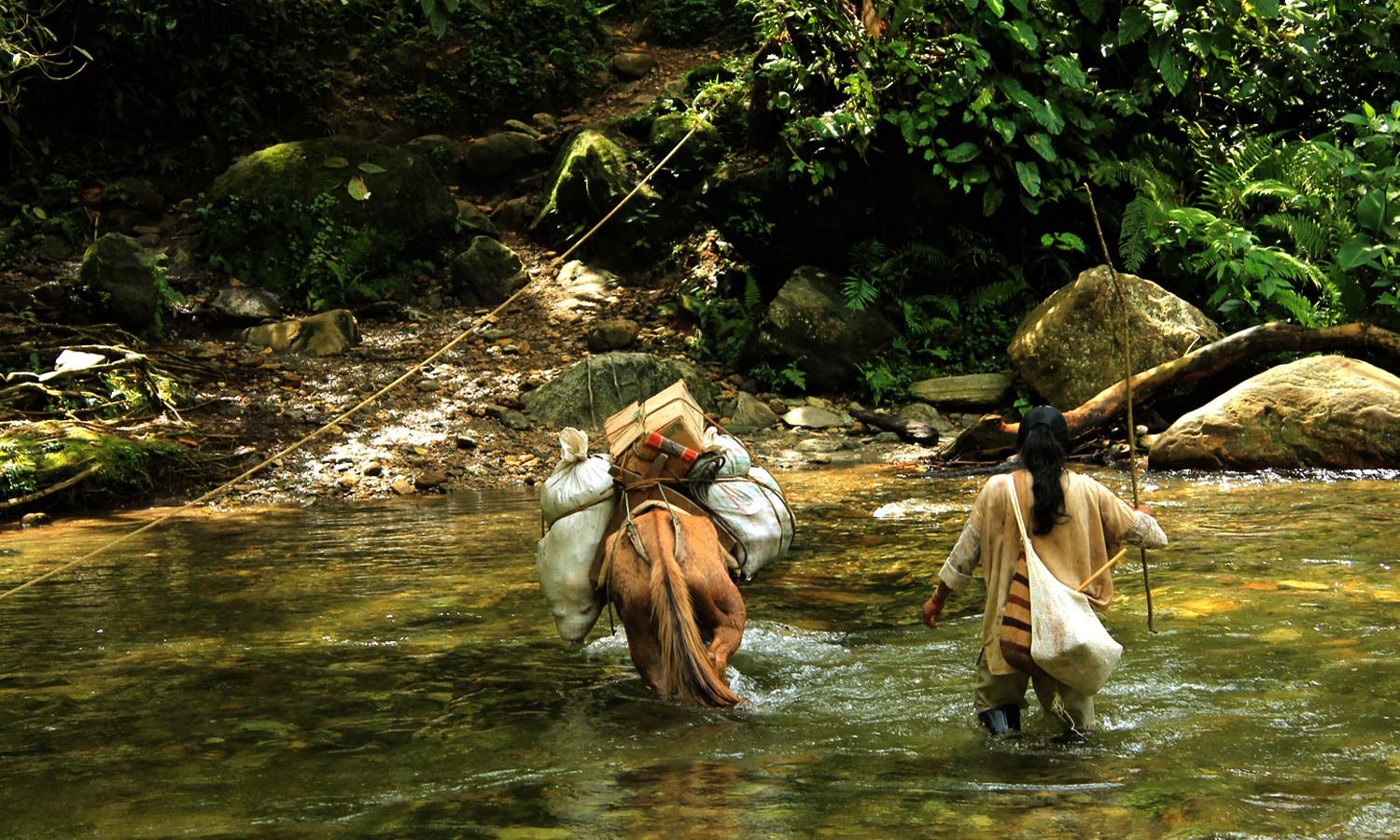
Kogui muleteer participating in the supply chain of the tour to the Lost City.
Other important facts about the Kogui
It is important to mention that the Kogui are threatened by the phenomenon of westernization and modernity, recently they are in danger due to an energy mining construction in the area of the Don Diego River that is very close to their villages.
The Kogui men are usually short stature, broad torso and long hair; since owning long hair for them represents hierarchy.
Wiwa
Other Indigenous people of the Sierra Nevadaare the Wiwas. There is another town that is also located in the lower part of the Sierra Nevada, to the south of the Guajira and some basins of Cesar. Due to the violence in the territory, there has been a displacement of the population towards the Jerez, Tapias and Guachaca Rivers.
At the moment the Wiwa people are going through a territorial conflict, about two years ago this ethnic group does not own a territory. The situation for this ethnic group is so worrisome that they are sheltered in a home of passage for Indians in the Department of Cesar; this has affected the development of the work traditionally done in their villages. They are today domestic employees, men are day laborers and children attend makeshift schools.

Wiwa women walking barefoot on the path that leads to the Lost City
Wiwa mythology
In Wiwa mythology, it is said that this name is associated with heat, its native or mother tongue as Maria Trillos calls it Damana. These have a dress similar to the Kogui, the difference is that the Wiwa use the longer pants, exceeding the knees as is commonly used by the Kogui and wear a hat made of “cane” wings.
The Wiwa weave their backpacks in materials such as wool and sisal, the women use the sisal backpack and carry a red cloth, being a symbol associated with the Cathartes aura buzzard, an animal that represents a very special thought for women.
Indigenous people of the Sierra Nevada de Santa Marta
Arhuaco
The Arhuaco town is located higher, these are located in what is considered the capital of the indigenous reservation, Nabusimake (north-eastern slope). From here they usually have communication and share with other peoples, either for food exchange or any other material. It is also the Arhuacos who have been in greater contact with the western world.
Its hierarchical order is organized by offices, that is to say, they have a political organization conformed by a sakuko, major and minor councils, and lastly, the knower called Mamo. They are also known as the Ijka or Iku people, pre-Hispanic name before the crossing or encounter with modernity.
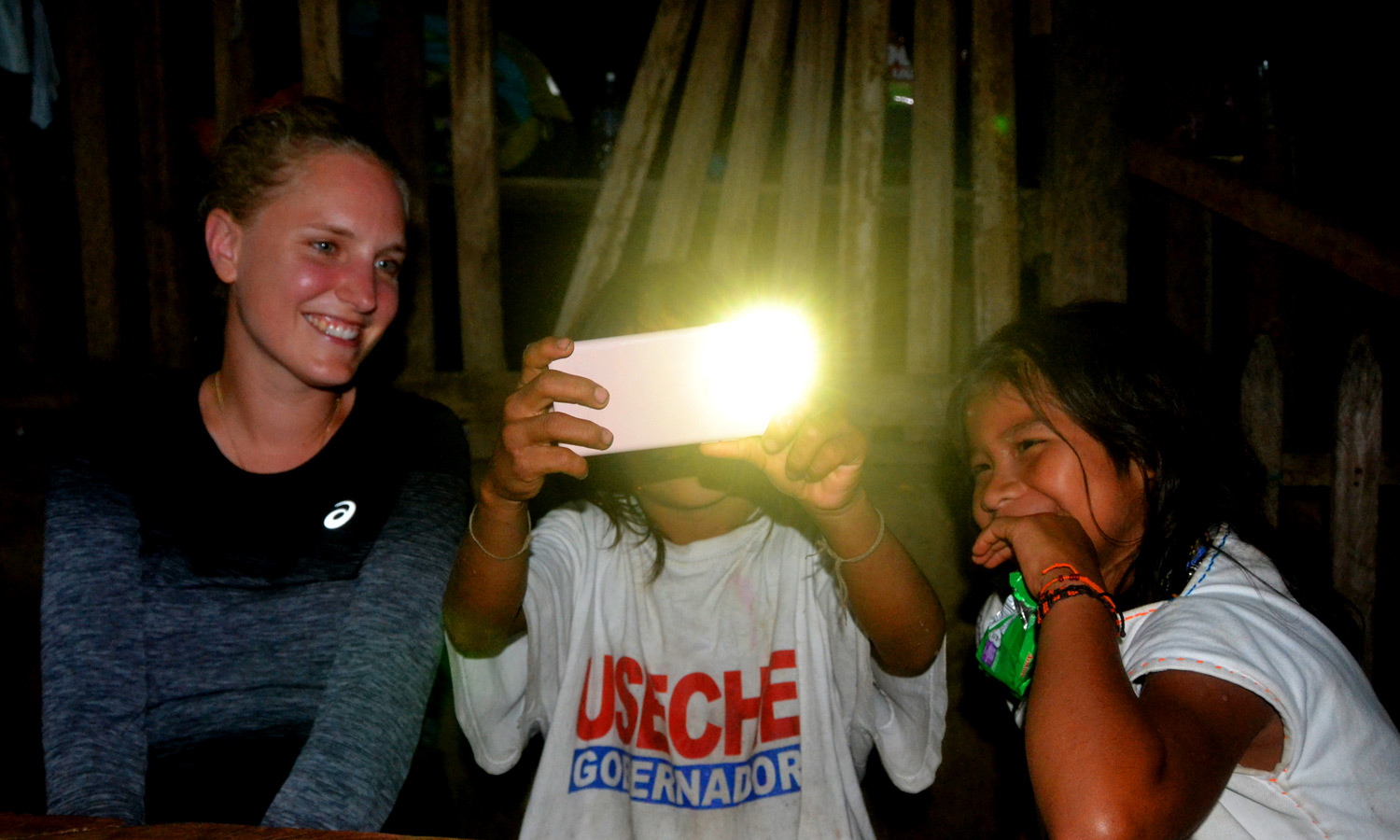
Children of the Wiwa community interacting with travelers in one of the camps.
The Arhuacos have physical characteristics a little more separated from the previous peoples, men reach an average height of up to 1.80 meters, women a stature between 1.60 and 1.65. In addition, they are one of the villages of the Sierra Nevada de Santa Marta who are concerned about always seeking balance with other people through
pacification and respect.
Read also: How to prepare your backpack for the trek to the Lost City?
Arhuacas women
As for their attire, the Arhuacas women, in relation to the Wiwa and Kogui peoples, use a suit made of a material called cotón; which they wear from one shoulder to the other.
They carry backpacks, made by themselves, with sheep’s wool. Usually the women when they are walking in the mountains, they are seen weaving while they advance along the way, brown skin, some with settled nose and rarely they show aquiline noses; very bright eyes in the case of older women.
Arhuaco men
Arhuaco men, also elaborate their costumes with cotton and adorned of colors, the trousers are of the same material; backpacks they own are made by the women of their tribe. The Arhuaco or traditional indigenous always wear sandals, today because of the effect of Occidentalism they usually wear shoes, boots, and some have backpacks in the cities.
They never leave without their backpacks, and they always go with a very representative element of the indigenous group, the poporo, this is made with a material made from an endemic or native tree, called a gourd.
The same as the other men of the groups of the Sierra Nevada de Santa Marta, the Arhuacos tend to keep their hair long and wear a cone-shaped hat called toczuma.
Enter our social networks to see more photos about the Indigenous people of the Sierra Nevada, Colombia







